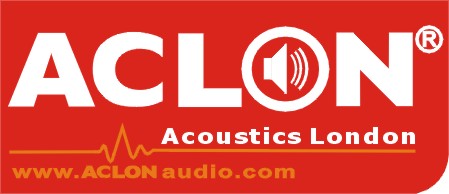Particular Choices For Final Amplifier
Engineers and audiophiles have one thing in common when it comes to amplifiers. They want a design that provides a strong balance between performance, efficiency, and cost.
If you are an engineer interested in choosing or designing the amplifier and Active Line Array Systems best suited to your needs. His article provides a comprehensive look at the characteristics, strengths, and weaknesses of different amplifier classes so you can select the best one for your application.
“Theory is easy, but difficulties arise when you actually want to design a real-world amplifier,” Lacoste says. “What are your particular choices for its final amplifying stage?”
The following article excerpts, in part, answer that question. (For fuller guidance, download Circuit Cellar’s December issue.)
The first and simplest solution would be to use a single transistor in linear mode… Basically the transistor must be biased to have a collector voltage close to VCC /2 when no signal is applied on the input. This enables the output signal to swing
A one amplifier can be built around a simple transistor. The transistor must be biased in so it stays in the linear operating region (i.e., the transistor is always conducting).
One amplifier can be built around a simple transistor. The transistor must be biased in so it stays in the linear operating region (i.e., the transistor is always conducting).
either above or below this quiescent voltage depending on the input voltage polarity….
This solution’s advantages are numerous: simplicity, no need for a bipolar power supply, and excellent linearity as long as the output voltage doesn’t come too close to the power rails. This solution is considered as the perfect reference for audio applications. But there is a serious downside.
Because a continuous current flows through its collector, even without an input signal’s presence, this implies poor efficiency. In fact, a basic Class-A amplifier’s efficiency is barely more than 30%…
How can you improve an amplifier’s efficiency? You want to avoid a continuous current flowing in the output transistors as much as possible.
Another amplifiers use a pair of complementary transistors in a push-pull configuration. The transistors are biased in such a way that one of the transistors conducts when the input signal is positive and the other conducts when it is negative. Both transistors never conduct at the same time, so there are very few losses. The current always goes to the load…
Another amplifier has more improved efficiency compared to a Class-A amplifier. This is great, but there is a downside, right? The answer is unfortunately yes. The downside is called crossover distortion…
If you are an engineer interested in choosing or designing the amplifier and Active Line Array Systems best suited to your needs. His article provides a comprehensive look at the characteristics, strengths, and weaknesses of different amplifier classes so you can select the best one for your application.
“Theory is easy, but difficulties arise when you actually want to design a real-world amplifier,” Lacoste says. “What are your particular choices for its final amplifying stage?”
The following article excerpts, in part, answer that question. (For fuller guidance, download Circuit Cellar’s December issue.)
The first and simplest solution would be to use a single transistor in linear mode… Basically the transistor must be biased to have a collector voltage close to VCC /2 when no signal is applied on the input. This enables the output signal to swing
A one amplifier can be built around a simple transistor. The transistor must be biased in so it stays in the linear operating region (i.e., the transistor is always conducting).
One amplifier can be built around a simple transistor. The transistor must be biased in so it stays in the linear operating region (i.e., the transistor is always conducting).
either above or below this quiescent voltage depending on the input voltage polarity….
This solution’s advantages are numerous: simplicity, no need for a bipolar power supply, and excellent linearity as long as the output voltage doesn’t come too close to the power rails. This solution is considered as the perfect reference for audio applications. But there is a serious downside.
Because a continuous current flows through its collector, even without an input signal’s presence, this implies poor efficiency. In fact, a basic Class-A amplifier’s efficiency is barely more than 30%…
How can you improve an amplifier’s efficiency? You want to avoid a continuous current flowing in the output transistors as much as possible.
Another amplifiers use a pair of complementary transistors in a push-pull configuration. The transistors are biased in such a way that one of the transistors conducts when the input signal is positive and the other conducts when it is negative. Both transistors never conduct at the same time, so there are very few losses. The current always goes to the load…
Another amplifier has more improved efficiency compared to a Class-A amplifier. This is great, but there is a downside, right? The answer is unfortunately yes. The downside is called crossover distortion…
What about reducing the supply voltage when the required output power is low enough? This scheme is clever, especially for audio applications. Most of the time, music requires only a couple of watts even if far more power is needed during the fortissimo. I agree this may not be the case for some teenagers’ music, but this is the concept.
Related reading: high performance power amplifier 4 channel digital amplifier
Previous : Power Amplifiers Provide Better Sound Effects
Next : Choosing the Best DJ Speaker
Hot Tags: amplificateur numérique 4 canaux
amplificateur à deux canaux 1300W
amplificateur de puissance de fiabilité
amplificateur de puissance de panneau aluminium
intérieure et extérieure puissante ligne tableau haut-parleur
high performance power amplifier
amplificateur professionnel
amplificateur 4 canaux 1300W
outdoor line array speaker
Neodynium ligne puissant haut-parleur de la matrice
Copyright © ACLON AUDIO Manufacturer Limited. All Rights Reserved.



















